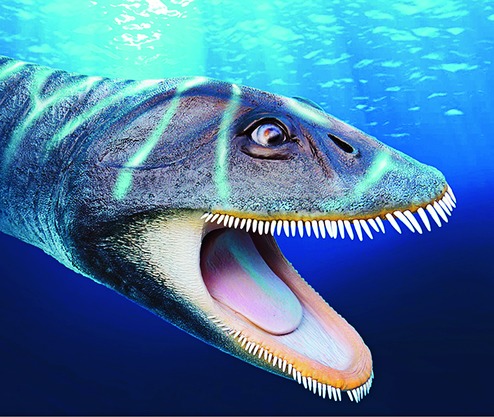
Sept. 1: The fossil skull of a marine reptile discovered by an Indian-origin paleontologist in Antarctica 33 years ago has now been labelled as the first of its kind to possess a sieve-like or so-called "filter-feeding" mouth seen in modern baleen whales.
Sankar Chatterjee, a professor of geosciences at the Texas Tech University, and his colleagues from Argentina, Chile and America said today the 1984 plesiosaur fossil from Antarctica's Seymour island had teeth that trapped oceanic creatures and let the water out.
"Most plesiosaurs have stout teeth, ideal for stabbing large animals, but the fossil we found had tiny and weak teeth that seemed to be pointing the wrong way," Chatterjee told The Telegraph on phone. "We believe the reptile had a filter-feeding mechanism in the mouth of the kind we see in baleen whales which are mammals."
Describing their findings in The Journal of Vertebrate Paleontology, the scientists said this was the first identification of a whale-like filter-feeding system in a marine reptile, a condition long believed to be anatomically impossible. They said the shared mechanism points to an unusual case of "convergent evolution" in which plesiosaurs and whales shared feeding styles despite emerging from different ancestors.
The creature whose dental anatomy they re-examined was found to have "interlocking combs of needle-like teeth" that did not meet tip to tip, but created a mechanism that appeared to have functioned as a sieve in straining food particles from material ejected from the oral cavity.
When the reptile would swallow a school of krill - tiny crustaceans - it would close its jaws to let the water out, while keeping the krill inside for chewing and swallowing, Chatterjee said. Such teeth would not have allowed this reptile to consume large fish or shelled marine animals, popular among most plesiosaurs.
Chatterjee said the reptile lived about 65 million years ago - near the end of the period called the Cretaceous, just before a mass extinction - believed triggered by an Earth-asteroid collision and possibly volcanic eruptions in India's Deccan - wiped out 75 per cent of the planet's species, including dinosaurs.










